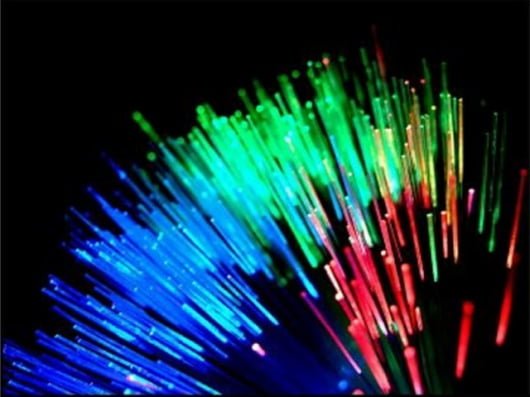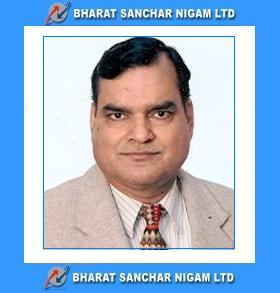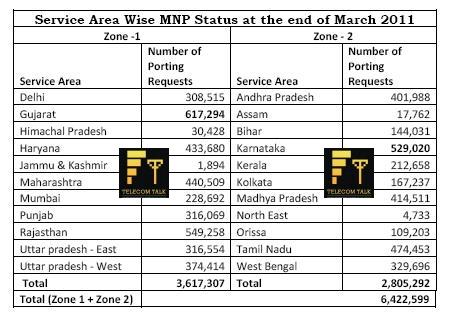

 Carrying on with my previous post about broadband connectivity in India, I will be talking about FTTH i.e Fiber to the home. What is FTTH, brief introduction to technology behind it, and scene of FTTH in India.
Carrying on with my previous post about broadband connectivity in India, I will be talking about FTTH i.e Fiber to the home. What is FTTH, brief introduction to technology behind it, and scene of FTTH in India.
To get idea of fiber to home, we first need to understand basic difference between communication over conventional copper, wireless mediums and next of fiber.
The biggest problem in using copper in communication is "noise". Copper pairs get noisy over distance, apart from getting too much effect of interference from nearby environment.
Now to carry more bandwidth, one needs to use really high frequencies (like we do in various flavors of DSL), and high frequencies are effected by noise even more. Imagine noise as road block interrupting traffic, and high frequency as car running at high speed!
Till now there has been no way out to the noise problem of copper. A lot of research work is still going on, but till now all we see is multiple bonding of pairs for increasing speeds i.e what At&t seems doing in US.
Next, if you look at wireless communication – as I explained in my last post due to limited spectrum, overall capacity is very much limited and one can't provide high speed broadband for very low rates to everyone. That is what makes 3G, EVDO and other stuff expensive.
Now coming on main part of this post – fiber. In case of fiber, communication is done using light which travels in whole fiber via a simple Physics rule called total internal reflection. Principle is quite simple, but it makes communication very effective as fiber is NOT prone to interference by any external element like other wires, apart from that loss of signal per Km is way too less in fiber as compared to copper. This makes fiber a very good "Physical" medium for carrying high bandwidth.
Considering those simple physical properties, it seems like fiber is really awesome, and should be used everywhere. Well there are few other important things when we discuss copper Vs fiber like it's very hard to splice fiber, one needs a dedicated team of trained technicians to splice fiber, apart from that if a fiber gets damaged, it's again hard to fix it as compared to just rejoining copper.
Apart from that a fiber splicing kit costs as high as $1000 as compared to less then $1 cutter used in copper. Also, till now all computers still talk in electrical signals, and whatever way we go at the end, we need to have electrical signals, thus we need to convert light impulses in fiber back to electrical impulses using ONT – Optical Network Termination. All these factors make fiber quite expensive. ONT still cost as high as $500 which is way too high amount considering average user pays less then 1/5th of that in a year.
Do we really need FTTH in India?
Well, that's a hard question. Answer varies.
One thing we always talk about is Internet speed or bandwidth. Fiber has very high bandwidth, and there is no other alternate. It's true, but question is – do we really need to deliver that much high bandwidth to all end users?
Using an advance DWDM equipment, one can carry as high as 10Gbps over single wavelength in a fiber. There are 160 possible wavelength, and thus in theory, one can give as high as 1.6Tbps over single fiber pair. (In real that is quite less due to limitation from switches, protocol running on top etc).
Yesterday we share a post on MTNL's FTTH offering on TelecomTalk. Well they just rolled FTTH out and are "capable" of giving 1Gbps speed to end user, but if you notice plan 1Mbps still costs 999Rs a month. You can imagine cost of 1000 times more bandwidth!
Firstly I would like to say 100Mbps, 1Gbps sounds very "awesome" speed, but fact is in real people HARDLY need that much speed and we can't ignore that fact specially when we are demanding for really expensive technologies.
Few days back, I had a discussion with my friend living in Sweden. He just got a upgrade from 16Mbps DSL to 100Mbps fiber. I asked him for his feedback over performance, and his reply was "Anurag, other then good upload speed, I hardly see any difference"
So why he missed to see a 6 times more faster connection?
Well, at 16Mbps, one can download 2MB every second. If you look at average web-page size, you will see average page on modern sites are well below 500KB, thus he can get whole page in 250ms. An average Youtube video is around 20-25MB, and can get that in 10-12seconds on DSL. Even for heavy downloading work (although he doesn't really do that), he can get a 1GB file in 500seconds (even less then 10mins).
Now people hardly do anything "new" or "fast" in real world on speeds beyond 10-15Mbps. Unless you plan to share that bandwidth up on multiple computers. Again, I am talking about bandwidth requirement on average computer.
But yes, there's a big problem in DSL – very slow upload speed. It is due to fact that co-axial wires are tightly packed in big copper trunks as they get out from exchange and they are spliced further so on as they reach end user. So when a end user sends some data to central exchange (upload…) the weak signal (because of low power consumption by CPE) goes on, and as it gets more closer to exchange, it becomes even more weak, apart from fact that it gets into tightly bundled 100pair trunks which are carrying data for lot of other users.
This causes "cross-talk" and even reduces signal strength degrading upload speeds. He had 16Mbps download while 500Kbps upload DSL connection, while now he has 100Mbps (up & down symmetrical) and one can surely tell difference in 500Kbps Vs 100Mbps upload speed.
Coming back on point – if one needs 5-10Mbps, we can easily get it on existing DSL connections, and we don't really need FTTH. Problem comes when more and more subscribe to 10Mbps plan, and it increases cross talk further degrading speed. But such cases are possible when a whole colony/street/apartment is demanding for high speed broadband and remember in all such cases it is economically feasible to bring fiber close to that street and from there back on copper.
This is known as FTTB/C – Fiber to the Building/ Fiber to the Cabinet. From that cabinet, one can carry signal over copper via VDSL or even conventional cat5 ethernet. Such hybrid fiber-copper models are really good in bringing down cost of expensive FTTH technology + they have enough bandwidth to serve demand. Don't say you can't get 10Gbps on VDSL (point is – how many people really need it!) 
Well that's all about basic of FTTH. More to come soon! 
About the author:

Anurag is a Student and a part time network admin at dito.
He is all around network related technologies like DNS, Internet routing, servers, connectivity etc. He is also one of Power Posters at Official Google Apps forum and is involved in deployment of Google Apps.
Anurag is doing bachelors in Information & Technology from a State college in Haryana.










